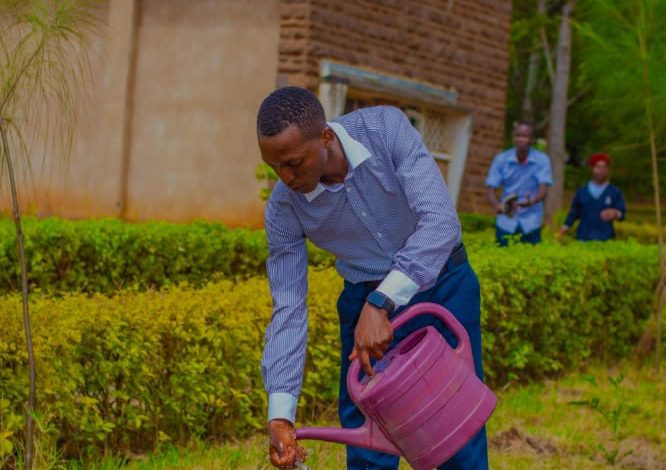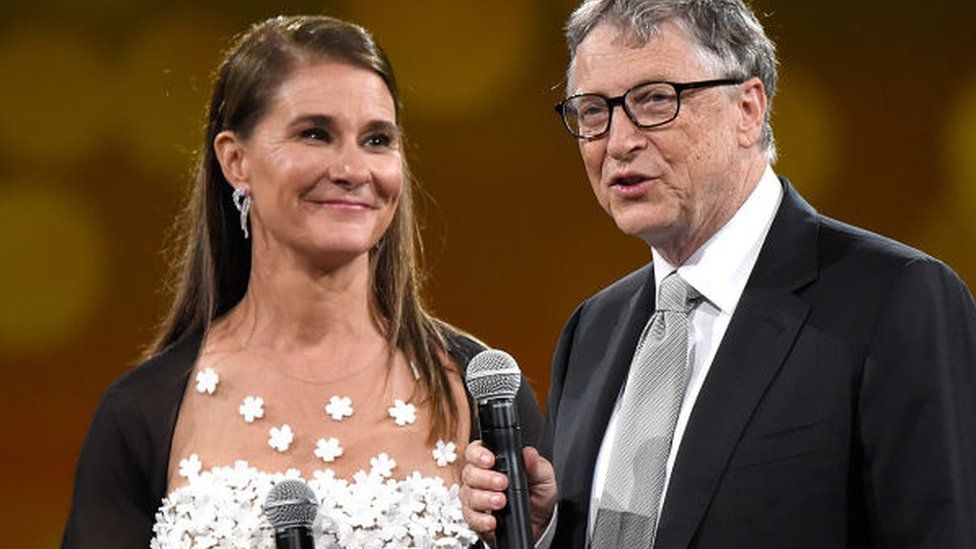Ian Wachira’s passion for the environment started two years ago after he attended workshops on climate change training. The final year actuarial science student at Kenyatta University has since become an environmentalist who sensitizes communities on climate change.
“I believe that the economy and the societal social pillar are on the environment. So we cannot have a well-doing economy and society without taking care of the environment first,” says the environmental advocate.
After attending workshops where he learned the importance of climate change, Wachira registered as a member of the Mount Kenya Network Forum, a Non-Government-Organization based in Laikipia county. He says the network is operating in Isiolo, Marsabit, Nyeri, Nyandarua, and Laikipia.
Here he joined the communication department and built his skills in disseminating information. The young digital activist now uses his Twitter, Instagram, and Facebook accounts to share content that pushes for climate change to educate his followers.
“I am now in charge of a renewable energy transition project. We want to educate the community and give trademarks of actual people using renewable energy,” Wachira says.
Wachira associates his passion with his outgoing and inquisitive personality which has helped him learn a lot on climate change. He further mentions that he has learned that communicating climate change goes hand in hand with championing for community involvement.
“I started by showing my followers the mitigation part and the impact of climate change. People have been probing about what they can do to address these issues, and seeing media coming on board means we are making an impact. It is a happy feeling,” he enthuses.
While the impacts of climate change can be traumatizing, he loves success stories emanating from initiatives taken by different stakeholders in the country.
SEE ALSO: Janet Kavutha: Saving The Giraffe Species
A July report by Africa Uncensored and Youth for Sustainable Development Kenya, supported by Hivos highlighted Twitter, Facebook, WhatsApp, and TikTok as the social media channels used to communicate information about climate change.
“We found that social media is a widely used channel for climate change communication. The respondents we interviewed mentioned its pivotal role in spreading knowledge about the dangers of climate change,” said Boaz Odawa, Data Quality Manager at International Centre for Policy and Research Solutions (ICPRS).
Despite social media being widely used to disseminate information about climate change, the report showed that authoritative institution reports were the most trusted sources of information. Radio, televisions, daily newspapers, songs, artworks, and poems were other channels the report, mentioned as climate change communication channels. The report showed that climate change is, currently a prominent topic and discussions around it are ongoing in the media. They recommended that there was a need to deliver climate change information timely. Boaz said respondents believed the information given by the government was more trustworthy.
“The study sort to appreciate the fact that there is a need to ensure that communication around climate change is packaged, organized, and delivered to communities in a way that they can use the information to change their lives or to mitigate the different impacts that they face especially when climate issues happen in their lives,” said Edwin Ochieng, the Design, Monitoring and Evaluation Advisor at International Centre for Policy and Research Solution.
The research also reported a lack of policy guidelines by governments as a barrier to climate change communication. As a result, climate change activists and other people whose interests are in the climate change sector now call on leaders to implement policy on communication strategy brought about in 2014.
“Communication channel are still missing. If a policy is discussing communication, let it do that. Let it not go underwater after they have been brought into place. So let everything address whatever its intention is to the society,” said Sheline Oyoo from the Environmental Capacities and Sustainability (ECAS) Institute.
Ms Oyoo further noted that there are still gaps in disseminating information about the implementation of the policies around climate change.
“We should fight for our rights, we should communicate, we should protest about it, we should be wild about it. What the policy says is actually, what should be implemented and done. And if leaders say that it is going to be implemented on such a date. They should be specific and follow what they say,” she insisted.
Pauline Makutsa, Programs officer at the Adaptation consortium says there is a need for various counties to allocate funds to handle climate change, adaptation, and mitigation. She said this can be achieved when there are a good legal framework and institutional structures to reach community levels.
“Everybody, whether they know it or not is impacted by climate change. Whether they talk about it in the same language as everyone else, everyone without exception is living under different kinds of impacts of climate change,” she says adding that matters of climate change are unavoidable.
“There are those people who are vulnerable in society or they are marginalized so they have no access to resilience measures that can help them cope with the change in the climate. So that is where the government and the civil society come in to help build the resilience of the marginalized and those who are vulnerable,”
The first-ever African Protected Area Congress held in Kigali in July saw African leaders increase their political goodwill towards more than 8,600 protected and reserved areas in the region. A move that was welcomed by World Wildlife Fund (WWF).
“African governments, conservation organizations, private sector, civil society, and society at large must build on the enthusiasm, energy, and momentum we have generated here in Kigali to ensure the call to action is fully implemented,” reads a statement by WWF Africa regional director, Alice Ruhweza. The press statement further stated that “In particular, recognizing the rights of Indigenous Peoples and local communities to their land and resources is central to achieving this ambition,”








